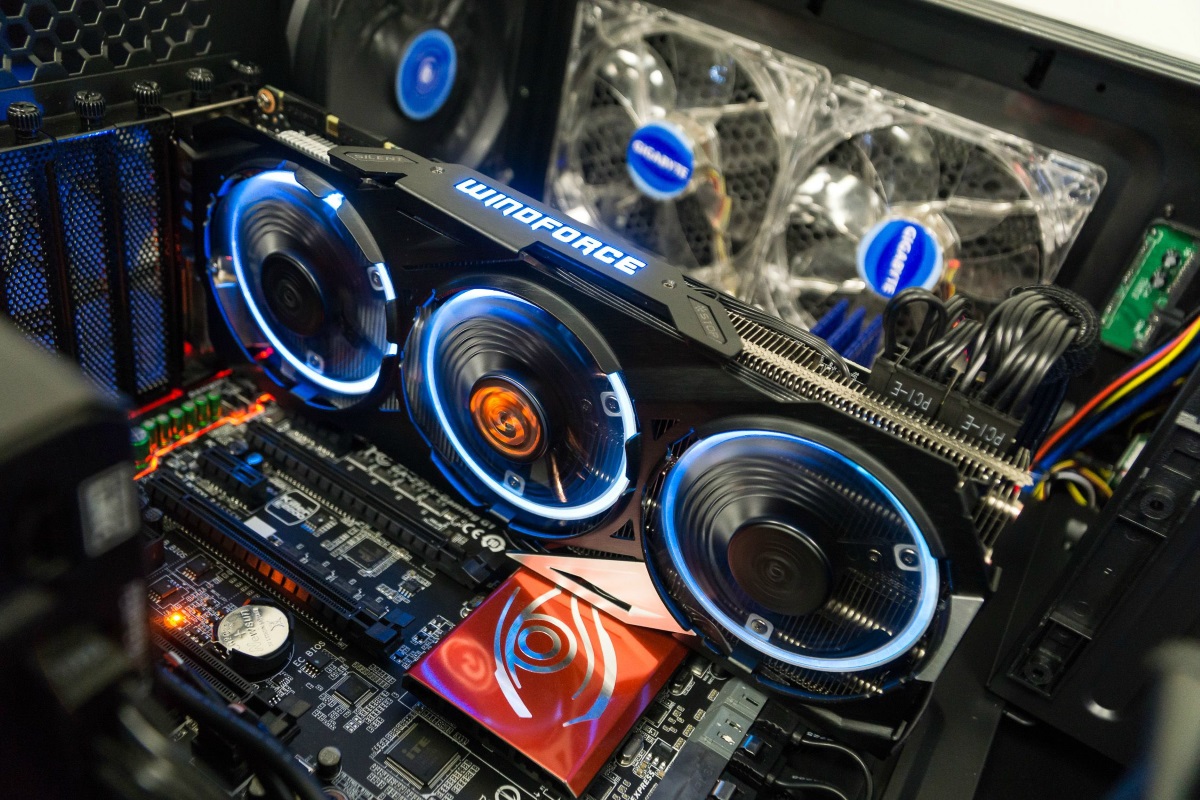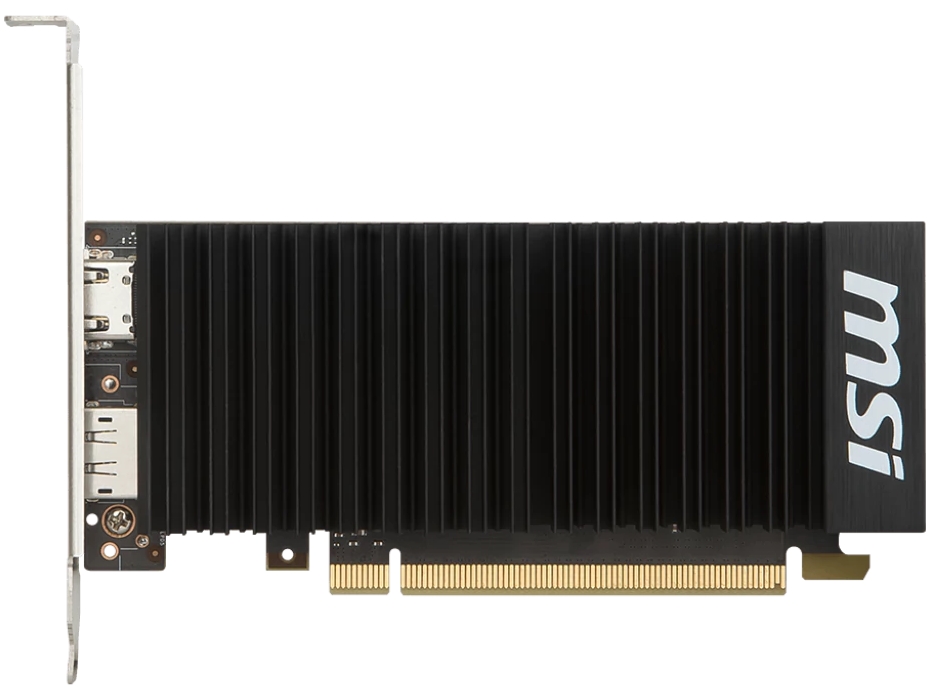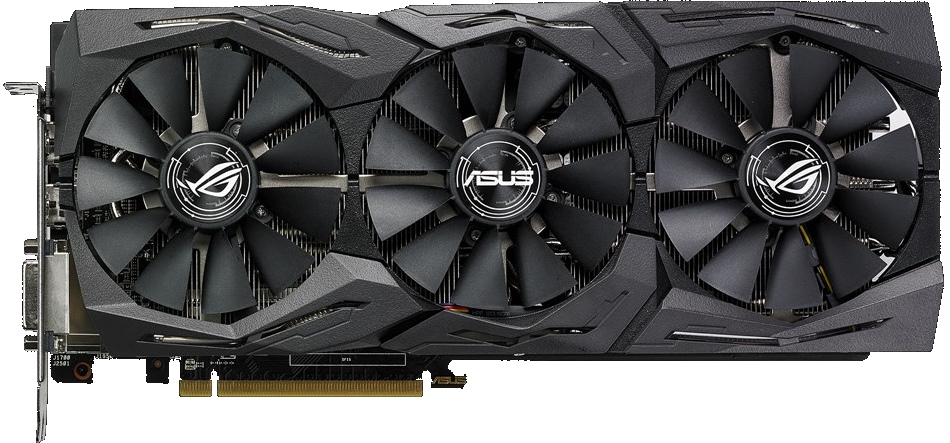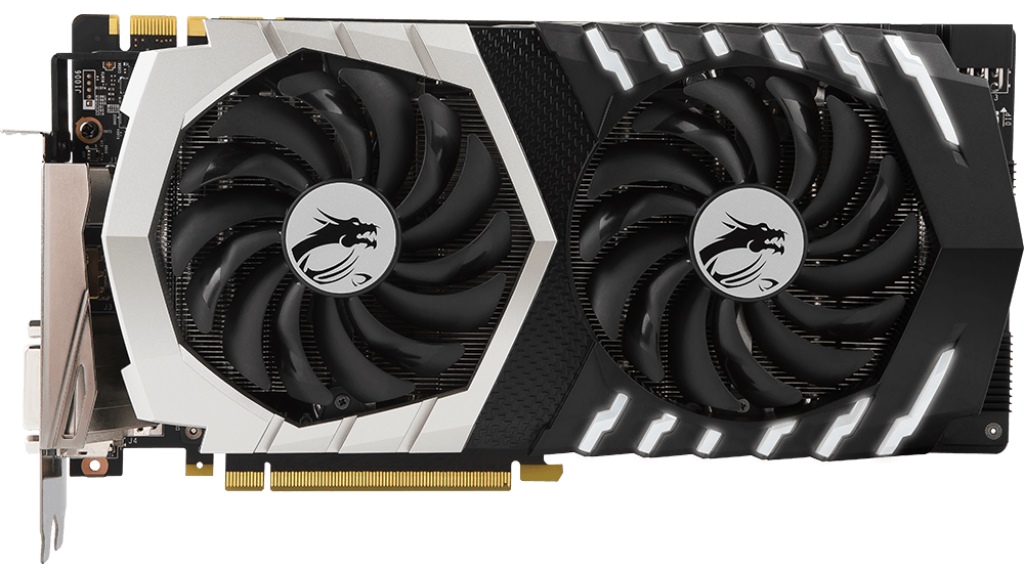GPU Expanse: Choosing the Best Graphics Cards (Mid 2018)

In this table, you can get acquainted with the technical characteristics of video cards from the review. You can independently choose a model for your needs in the catalog of video cards.

The GTX 1030 is the youngest model in NVIDIA's 1000 series. The people called it a “plug” for its minimal performance and price, but despite its modest characteristics, the graphics card will easily find a place in the user's computer. Especially in the form of the MSI GT 1030 2GH LP OC model with passive cooling, which will perfectly complement the passive PC build.
The graphics card is based on a 14nm GP108 chip and is equipped with 384 CUDA cores operating at a frequency of 1227 MHz standard to 1468 MHz boost. The model has 2 GB of GDDR5 memory operating at 6000 MHz and a 64-bit bus. Also note 16 render units and 24 texture units.
The graphics card compensates for modest characteristics with low power consumption — only 30 W with no additional power supply, DisplayPort video connector, the need for only 4 PCI-E lanes, and DirectX 12 support. Specifically, the MSI GT 1030 2GH LP OC version and overclocked to 1265 MHz standard and up to 1518 MHz in boost.
The characteristics of the graphics card are sufficient for e-sportsmen. In DotA 2, CS:GO, World of Tanks, Rocket League and even Rainbow Six Siege on minimum settings, the player will get a stable 60 FPS at least, and in serious and heavy games like Witcher 3 and Battlefield 1 — about 30 FPS. Plus, with DisplayPort, you can output to high-frequency gaming monitors and enjoy 144Hz smoothness in old-school games and on the desktop. The MSI GT 1030 2GH LP OC is an excellent low-cost graphics card for low cost builds. This model will also not come with slower DDR4 memory instead of GDDR5, such as the MSI GT 1030 2GD4 with active cooling.

The RX 560 graphics card was introduced as an update to the RX 460 based on the optimized Polaris architecture. The difference between the generations is, in fact, only in the frequencies of the core and memory, which allowed the new product to compete more successfully with the GTX 1050, and in terms of the future — due to versions with 4 GB of video memory — even more superior to the analogue from NVIDIA.
The graphics card is built on a 14nm Polaris 11 core, operating at frequencies from 1175 MHz standard to 1275 MHz in boost. Four gigabytes of GDDR5 with a 128-bit bus operate at an effective frequency of 7000 MHz. The graphics card is equipped with 64 texture units, 16 render units and 1024 stream processors. Like all new generation video cards, it has support for DirectX 12 and Vulkan.
Specifically, the Asus Radeon RX560 O4G EVO is one of the most affordable variants of this graphics card. It does not shine with powerful cooling, its frequencies are even slightly lowered next to the stock copy — 1149 MHz by standard and 1197 MHz in boost. However, it is equipped with two fans, does not require an additional power supply, unlike more expensive models, and costs an average of $40 less than, say, the ROG brand.
Lower frequencies do not critically affect performance. Even on medium-low settings, you can easily get a stable 60 FPS in Battlefield 1, Deus Ex: Mankind Divided, For Honor, even in new games like Far Cry 5. In addition, do not forget about the possibility of manual overclocking, which will allow you to increase FPS, at least and not higher than the level of cards with additional power.

The GTX 1050 Ti was boldly named the Queen of FullHD when it hit the market due to its performance, sufficient for 60 FPS in all modern titles at settings not lower than average. Having no direct price competitor from AMD, the graphics card quickly became a bestseller and remains so to this day.
The 1050 Ti is based on a 14nm GP107 chip, clocked from 1290MHz standard to 1392MHz boost, equipped with 768 CUDA units and 3300 million transistors. 4 GB of its GDDR5 memory have a 128-bit bus and operate at a frequency of 7008 MHz. 48 texture blocks, 32 rendering blocks. Of the additional video connectors, I note DisplayPort, which allows you to display a picture for gaming high-frequency monitors — 144 Hz and higher. However, the 1050 Ti model was one of the most inexpensive and suffered from mining, so until now its cost is now overpriced by an average of 20%.
Since the GTX 1050 Ti is no longer a low-cost model, but a mid-range model, the Gaming X 4G version from MSI embodies everything that the average gamer needs. Factory overclocking to 1379 MHz by standard and an impressive 1493 MHz in Boost mode is provided by additional 6 pin power supply. In addition, MSI's signature Gaming X design allows you to enjoy the appearance of the graphics card in assemblies with transparent side walls.
Since the TDP of the graphics card is only 75W, cooling with two 80mm fans in addition to an aluminium radiator with two heat pipes is more than enough. The case has two independent illumination areas. In games, the MSI GTX 1050 TI Gaming X 4G is pleasantly impressive and allows you to get 60 FPS even in new products like Far Cry 5 at medium-high graphics settings, and in eSports games, even 144 FPS for high-frequency monitors. Support for DirectX 12 and Vulcan is also available. However, for VR and 2K gaming, the graphics card is no longer enough.

The Radeon RX 480 was once promoted as a "VR for the Masses" graphics card. Both she and her update, the RX 580, are competitors to the GTX 1060, or rather, the 6GB version. The 580 model, like the younger ones, is an updated version of the 480 with an increased frequency and was almost unaffected by the mining madness, so its price is often even lower than the previous generation.
Based on the 14nm Polaris 20 core, clocked at 1257MHz standard and 1340MHz boost, the graphics card is equipped with 144 texture and 32 render units, as well as 2304 stream processors and 5700 million transistors. The 8 GB version with GDDR5 memory running at 7000 MHz has a 256-bit bus. These capacities are enough for VR gaming and 2K monitors.
The ASUS ROG Strix Radeon RX 580 O8G Gaming version is equipped with three fans and five thick heatpipes for better cooling. And she will need cooling, since she has a TDP of 185 W, and an 8-pin connector is needed for additional power. The board is protected from bending by a metal plate with ASUS Strix signature patterns. The graphics card case is equipped with thirteen backlight areas with synchronization through proprietary Aura technology.
Due to the increased core frequencies — and the ROG Strix Radeon RX 580 itself is able to increase them to 1380 MHz — the graphics card is perfect for comfortable 2K gaming and VR helmets. Even AAA titles like Far Cry 5 at high and ultra settings with stable FPS above 60 will run without any problems. In addition, 8 GB of video memory will allow you to play AAA titles for many more years without being afraid to fill it with textures to the eyeballs. However, due to the length of 298 mm, the graphics card may not fit in small cases.

Released as a competitor for the RX Vega 56, the GTX 1070 Ti is essentially a GTX 1080 redesigned for slow memory. Otherwise, including core clock, bus and more, the graphics card is on par and delivers great performance for the money.
The 1070 Ti is based on the 16nm GP104-300 chip, clocked from 1607MHz standard to 1733MHz boost. 8 GB of GDDR5 memory with a 256-bit bus running at 8008 MHz. The graphics card has 2432 CUDA cores, 2432 stream processors, and 132 texture units.
The Gigabyte GeForce GTX 1070 Ti GV-N107TGAMING-8GD version is a classic three-fan model with two hollow heat pipes. One 8-pin connector is responsible for additional power, there are eight power phases, which means that the graphics card can be overclocked to the performance of the GTX 1080. The metal plate at the back is also responsible for the strength of the case. In addition, instead of two DisplayPort graphics card has all three.
Like all older GTX models, and RX Vega too, the graphics card is designed for gaming with ultra-graphics settings at resolutions up to 2K, and by lowering the mid-low settings, you can count on 60 FPS even on 4K monitors. In the case of FullHD, owners of high-frequency gaming monitors will be able to get a stable 144 FPS already at medium graphics settings in AAA-new products.
A good processor is needed for games, and for streaming, and it will come in handy in editing gameplay.
Compact accomplices in the fast handling of large data arrays.
Has the long-awaited “post-computer” era arrived, or is the classic PC still indispensable?
Curved monitors with a 30+ inch screen, high resolution, USB hub and other gaming stuff.
Inexpensive on-ear headphones that will introduce you to the world of portable sound.
















